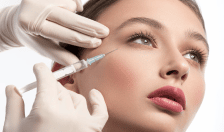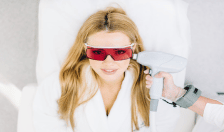
Contrary to popular belief, Botox, or Dysport (think Pepsi and Coke) isn’t just a solution for wrinkles! While there’s no shame in getting Botox to look your best, it can do so much more.
Botox, or Botulinum toxin, is used in many cosmetic procedures, especially on the face to relieve crow’s feet, fine lines, and wrinkles. However, Botox has also been FDA approved for use for several medical conditions as well.
1. Neck Spasms and Pain
Botox has been used in many patients to treat neck spasms and chronic pain of the neck and shoulders. This is also called cervical dystonia or spasmodic torticollis. Though the condition can occur from a genetic mutation, it can also be caused by trauma to the cervical spine or certain medications.
To understand how Botox treats each of these conditions, including neck spasms, we must explain how it generally works.
Botox becomes effective when it begins blocking the nerve signals that tell your muscles to move. So, when your brain sends the nerves a signal to move your muscles, the Botox blocks the nerve from telling the muscle. This creates a temporary paralysis of the affected muscles until the botox wears off.
So, when used to treat patients who suffer from this muscle disorder, it is injected at the site of the most active and persistent muscles. Though there is currently no cure, physical therapy and Botox treatments have been known to lessen the symptoms and effects of the condition.
This specific disease is rare, but muscle spasms affect a large number of the population. Botox can also help with other muscle spasm issues caused by injury, cerebral palsy, and strokes.
2. Avoiding Excessive Sweating
It is estimated that over 15.3 million people in the United States currently suffer from excessive sweating. Botox has been used to treat patients who suffer from excessive sweating or “hyperhidrosis.”
In people with hyperhidrosis, excessive sweating isn’t brought on by heat, exercise or nerves, but can be completely random and uncontrollable. This is where Botox comes in. Botox blocks the signals sent by nerves that would usually cause you to sweat.
When used in localized areas where sweating is most common, like the armpits, face, and hands or feet, Botox can reduce the amount of sweat your body produces.
3. Help With Chronic Headaches or Migraines
You’ve probably seen commercials or heard of people using Botox for chronic migraines or headaches. For many people, migraines can be completely debilitating, often forcing people to stay home from work or school to recover.
Botox was approved to treat migraines by the FDA in 2010, proving to not only reduce but prevent migraines in patients who used it. It is injected around the temples, between the eyes, or on the forehead to reduce and block pain signals.
4. Eye Twitching
Botox can work the same way for eye conditions as it does for people with muscle spasms. A lack of sleep or stress does not always cause excessive eye twitching, known as blepharospasm. It can cause the muscles around the eye to twitch or blink uncontrollably.
With Botox, the muscles don’t receive the signals to twitch, though they do not affect one’s natural ability to blink.
5. Overactive Bladder
An “overactive bladder” is characterized by the need to continually and suddenly feel the need to go to the bathroom. For people that this affects, it can be uncomfortable and commonly interfere with daily life. Though there are medications to help, these don’t work for everybody.
Botox alleviates this discomfort and embarrassing condition by blocking nerve signals that tell your bladder it has to go.
6. Enlarged Prostate
Enlarged prostates, or benign prostatic hyperplasia, is a common condition among older men. Over-enlarged glands cause the condition in the prostate, which can put pressure on the urethra. It results in discomfort and pain, especially when trying to urinate.
Botox is useful when injected into this overactive prostate gland because it can reduce its size over time, making it easier to urinate.
7. Bell’s Palsy and Synkinesis
Bell’s palsy is a condition that results in the drooping or sagging of the muscles on one side of the face. It is most commonly the byproduct of an infection in the body though it can develop through any compression or swelling of the seventh cranial nerve in the brain.
This condition is usually temporary, but Botox can help in the facial retraining process if the problem persists.
On the other hand, Synkinesis can be a symptom of Bell’s palsy or a condition on its own. It will create the involuntary movement of muscles in the face when moving other muscles. When Botox is injected in the areas where you don’t want the muscles moving involuntarily, it can control this issue.
8. Managing Acne
Finally, Botox injections have been known to help with severe acne untreatable by other methods and medications. As we know, acne is caused by overactive oil glands and can cause blemishes on the face.
Botox alleviates these symptoms by inhibiting the oil gland from contracting, thus eliminating surface oil, which is the cause of acne.
For more information about Botox treaments or to schedule your complimentary consultation, contact us at Hamilton Aesthetics of the Palm Beaches. We can help you discover if Botox is the right choice for you.
Looking for beautiful, natural results? Don’t look much further
Book your first consultation with our experienced aesthetic providers
Book Appointment













